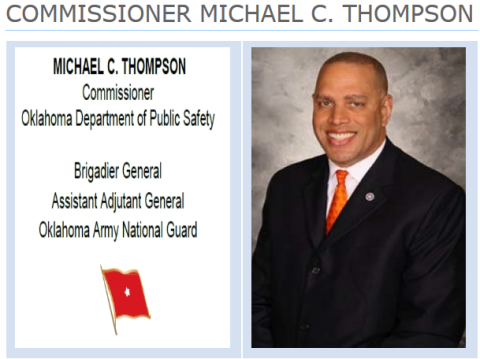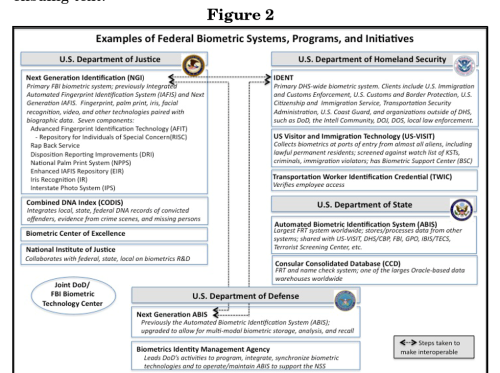
Kaye Beach
Nov. 28, 2015
This is the testimony of the third speaker at the REAL ID Study held by Rep. Lewis Moore and Rep. Bob Cleveland at the Oklahoma state capitol on Nov. 18, 2015.
Unfortunately no official recording was made so I have taken the trouble to transcribe the Commissioner’s entire testimony, word for word, for the benefit of those who could not attend the meeting in person.
My next post will be the transcription from the Question and Answer portion of the meeting.
To prevent confusion that may arise from reading this testimony, please note that some the references made by the Commissioner indicating points raised by Howard Houchen and myself, were not actually points we made. (We were puzzled by his references too)
At the Nov. 18th study, none of the speakers suggested that fingerprints or social security numbers could be retrieved from the face of our driver’s license and no one mentioned “computer chips” on the license or ID card but these were the main issues addressed by Commissioner Thompson in his testimony. Perhaps they were issues raised to him privately or from a previous meeting.
It is understandable that the Commissioner would want to put any such concerns to rest. What is unimaginable to me is that the Commissioner of the Department of Public Safety apparently does not understand the difference between a photo of a person that exists and a government collected and retained biometric photo. These two things are quantifiably not the same and the implications of the difference between the two is enormous.
As Professor Laura K. Donahue, who did an exhaustive research paper in 2012 on the growing number of federal programs that are developing their ability to use remote biometric ID, has repeatedly emphasized,
“The level of intrusiveness represents something different in kind—not degree—from what has come before.”
Of course, if no one can agree on the basic facts of the matter, the debate slams shut.
On to the transcript:
Testimony of Department of Public Safety Commissioner, Michael C. Thompson, Nov. 18, 2015, Oklahoma State Capitol, Rm 206, REAL ID Study:
“First off I just want to say the purpose for us, here at DPS, is, uh, we don’t have an agenda in this discussion. Our sole purpose in this is to provide accurate information to you as legislators to make the difficult decisions you have to make. …Whether the state of Oklahoma moves forward with implementation of REAL ID or whether it doesn’t that isn’t anything DPS controls.
Unlike Ms. Beach, and I respect her passion and interest in this subject, I personally believe that there are going to be consequences if we don’t comply with REAL ID.
Currently we are, do have an extension through October 2016. Once that extension expires and we’re not down the road to complying with this, I do believe at some point we are going to have consequences. I strongly believe that and I know some people don’t. And one of them will include getting on an airplane which seems to be kind of a trivial matter but if you want to go to Kansas City to watch the Big Twelve Championship, you are going to have to have a passport. If these ah these conditions are not fully implemented and if you do get a passport its $110 and you are giving all your information to the federal government so, for me, just, I don’t fully understand the resistance to it but I’m not disrespecting anyone’s opinion on this because the last thing I’m going to do is come in here and be impolite.
Last month, in October, Randy Rogers and Jeff Hankins sat in here to give you interim study about REAL ID and they thought that they did a great job and answered all your questions and I was very surprised later to find out that you weren’t satisfied with the responses that they gave you based upon some independent research that you did. So the three points that you had strong concerns about, let me just address those first off … I believe there was a strong concern about fingerprints, computer chips and social security numbers.
I’ll start with the one that probably raises the most eyebrows, computer chips. There is no requirement or no plans to put a computer chip on the face of a REAL ID, Oklahoma REAL ID. None. Randy Rogers and Jeff Hankins told you that and I’m telling you that today. And despite what anyone else tells you differently, that is the truth. If anyone tells you differently I would love to see the documentation that says we are going to do that because there is no plan to do that.
Ah, there is a fingerprint system that we have in Oklahoma. That fingerprint image stays in Oklahoma, in our databases.
I know Mr. Houchen and Ms. Beach are concerned about us sharing this with a number of folks but I need some kind of proof to that. One of the privileges we have living in this nation is we are entitled to free speech. You can say anything but at some point we have to have documentation to back up these claims that are being made and if they have proof of that I’d like to see it. There’s no fingerprint that is going to be a part of a REAL ID you can’t, you cannot retrieve a fingerprint off of a REAL ID. I know that was a concern for this group here.
And the last thing is the social security number. The social security number will not, will not, be retrievable off a REAL ID …moving forward there’s no requirement for that, there’s no plans for that.
Those are the three things I think you folks has the most heartburn about. Randy Rogers and Jeff Hankins who answered those questions for you… We have not.., at DPS, we have nothing over here if we don’t have our integrity and good reputation. There’s nothing that they told you that was untrue and mainly I wanted to point that out that they were very forthcoming and very truthful when they gave you those responses at last month at your REAL ID interim study.
How you decide to move forward REAL ID is how you decide to move forward with REAL ID.
It is a bit ironic though and I am stealing Randy’s time but I’m not going to need 30 minutes… it is a bit ironic for me that Ms. Beach talked uh, at length about a high resolution uh image. I can google you right now – from Syria and pull up high image, real high resolution image of you off of Google images.”
Kaye Beach: “Can you deny me my ability to pick up my prescription with that photo?”
Rep. Cleveland: “Let’s hold the questions until we get through here.”
Commissioner Thompson: “And I apologize for that. I shouldn’t be addressing those questions to you personally. But the fact is, our images, your images, pretty much everyone at this tables images, it’s already out there. It’s not as if we are safeguarding that and holding it in our hands in some kind of lockbox it’s there and its high resolution by the way.
Most people want to go get a driver’s license for the purpose of driving a car or driving an automobile, but most people, ordinary people, and I certainly include myself in that number, we don’t have the ability to go out and write a $30, 000 check for a car or a $50,000 check for a Ford F150 pickup, we have to go finance that and when we finance that with a lending institution, we write down what our name is, what our social security number is , what our date of birth is, where you lived for the last ten years, who our landlord is, what our wife’s name is, what our wife’s maiden name is, what our child’s name is, what our child’s middle name is, um who your references are, what’s their name, what’s their address, how much do you owe information, you give all that information to a lending institution and feel happy about walking out there with a competitive interest rate to go and buy your Ford F150 or your Toyota Camry but next month when you have to go renew your driver’s license (unintelligible) because we’re asking you some very simple, very basic questions. For me, I just don’t understand that.
If you walk out of here and go to the restroom and fall and break your leg, before you leave that hospital that doctor is going to have all that information that’s far more intrusive. The information that you would have to provide to get a passport, it’s incredibly intrusive.
Mr. Houchen mentioned SF 86, I’ve filled out a number of them. I’ve got a top secret clearance with the federal government right now and I agree, Sir,that is a beast to fill out. It’s like 40 pages. It’s so intrusive, I start crying every time I have to redo my clearance. It’s a hard object to fill out but we fill that out because it’s a requirement. If you go and get your teeth cleaned, you’ve got to give a lot of information to that Dentist before you get your teeth cleaned.
I get, I get the, uh emotion attached to REAL ID because of where we are at this stage but again, Sir, I promise you, I am not here to try to push an agenda or try to convince you to move forward with this. If you do as a state, great. If we don’t, I think we are going to have to live with the consequences at some point and that is really our position at DPS. Once this is passed, if it does get passed, we’re ten years behind the rest of America so we’re going to have a lot of work to do to get this thing pulled off.
And the last thing about the chip because that was a reoccurring subject that came up a number of times. The people that we do business with, we as the state of Oklahoma, is MorphoTrust. They represent 42 different states and jurisdictions. There are 42 people have REAL ID’s with them and none of those states have a chip on the face of their Real ID and if they do, I’d like to see it because unequivocally, they have told us, specifically, there is no requirement and no plans to put a chip on the face of a REAL ID. With that, I’m sure there are a number of questions and I will yield remainder of my time …”


























